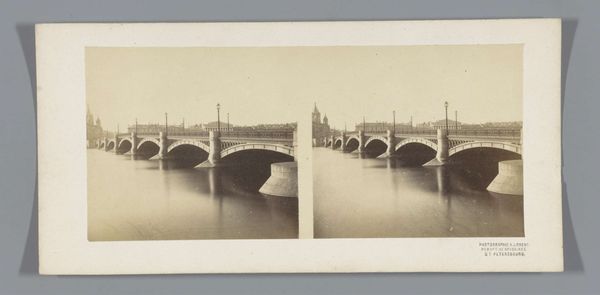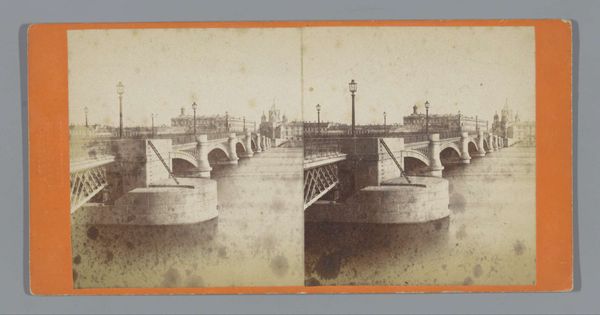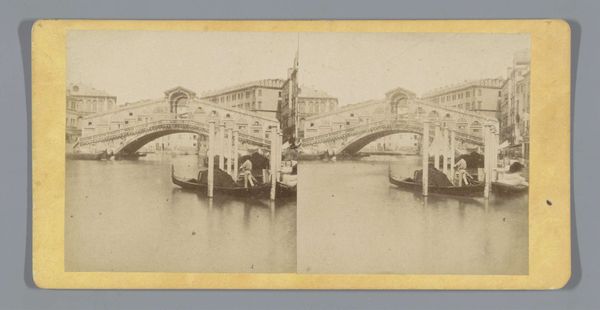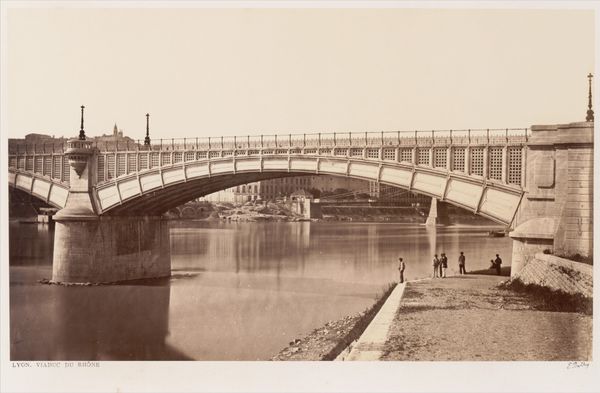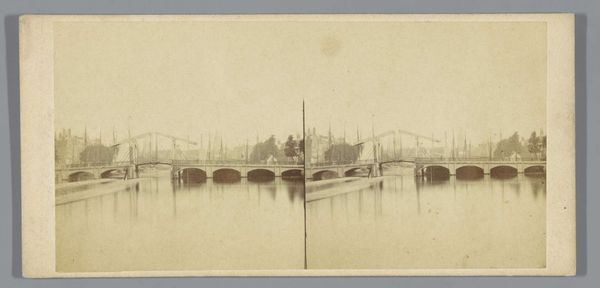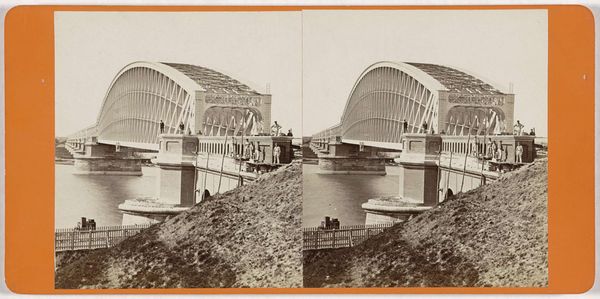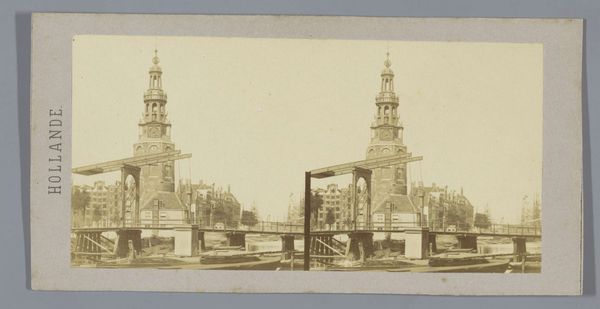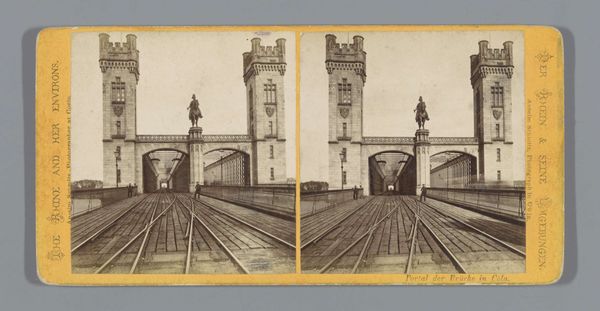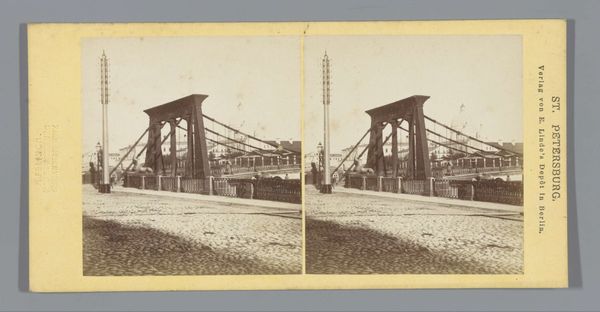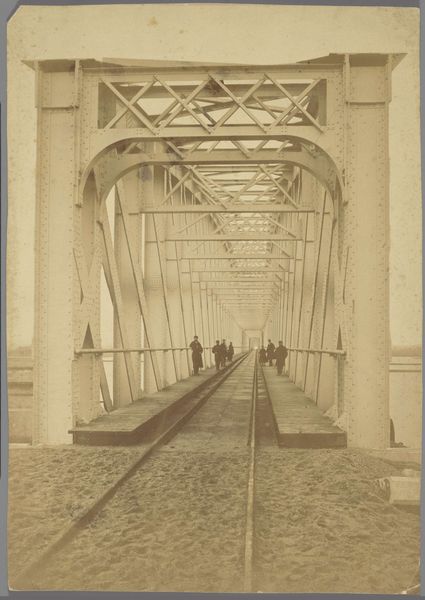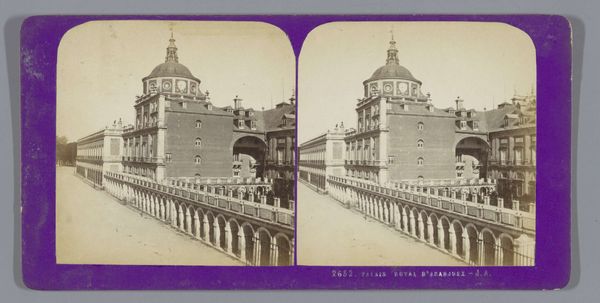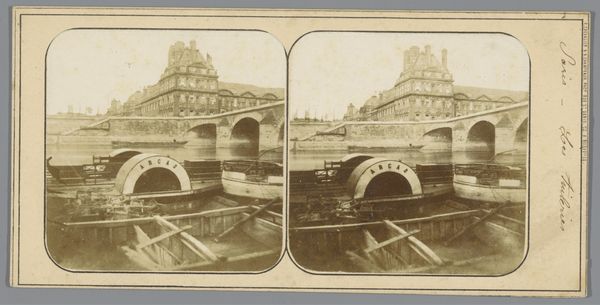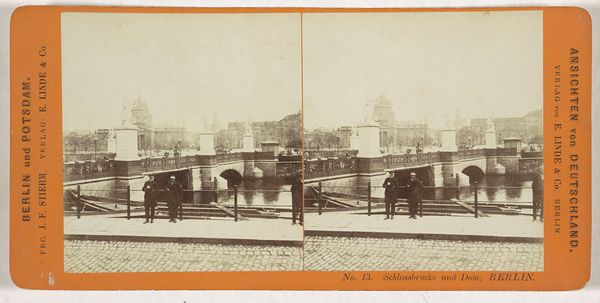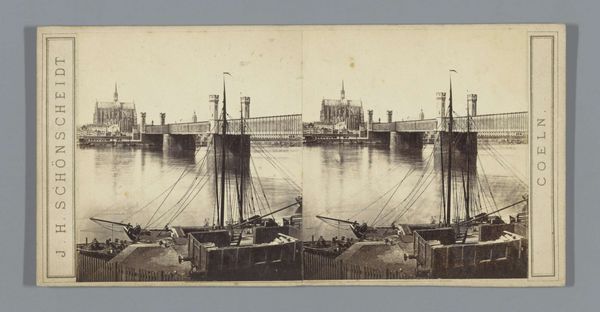
Gezicht op de Nicolaaskapel op de Nicolaasbrug in Sint-Petersburg c. 1860 - 1880
0:00
0:00
print, photography, gelatin-silver-print
#
portrait
#
16_19th-century
# print
#
photography
#
gelatin-silver-print
#
cityscape
#
realism
Dimensions: height 85 mm, width 170 mm
Copyright: Rijks Museum: Open Domain
Editor: Here we have Alfred Lorens' gelatin silver print, "View of the Nicholas Chapel on the Nicholas Bridge in St. Petersburg", dating from somewhere between 1860 and 1880. It's so… orderly, almost sterile in its depiction of the cityscape. What strikes you about this image? Curator: It's fascinating how photography at this time straddled the line between documentation and artistic interpretation, wouldn’t you agree? What’s most apparent to me is the institutional embrace of progress embodied in the bridge. It represents St. Petersburg’s ambition as a modern, Westernized city. Editor: An embrace? It feels so detached though, doesn’t it? Curator: Perhaps “endorsement” is a better word. Early photographs of urban infrastructure projects often served as powerful tools of state propaganda. Consider how this image might have been circulated – as a symbol of national pride, scientific advancement, and political power. Who was the target audience? How would its architectural design shape their perception of St. Petersburg's authority and future trajectory? Editor: So the bridge itself is a symbol of something bigger? More than just, you know, a way to cross the river? Curator: Precisely! Bridges inherently connect disparate spaces, facilitating trade, communication, and movement. Here, the Western European architectural design grafted onto the St. Petersburg landscape sends a distinct socio-political message. Does this context shift how you perceive that 'sterile' quality you observed? Editor: It does! It’s like the photograph is trying to project an image of control and progress, whether that reflects reality or not. I see it differently now. Curator: Precisely! We often interpret a work like this for its aesthetic merit, however its social function can be equally important to consider. Editor: This has been eye-opening, considering the wider role images can play in projecting specific ideas.
Comments
No comments
Be the first to comment and join the conversation on the ultimate creative platform.
